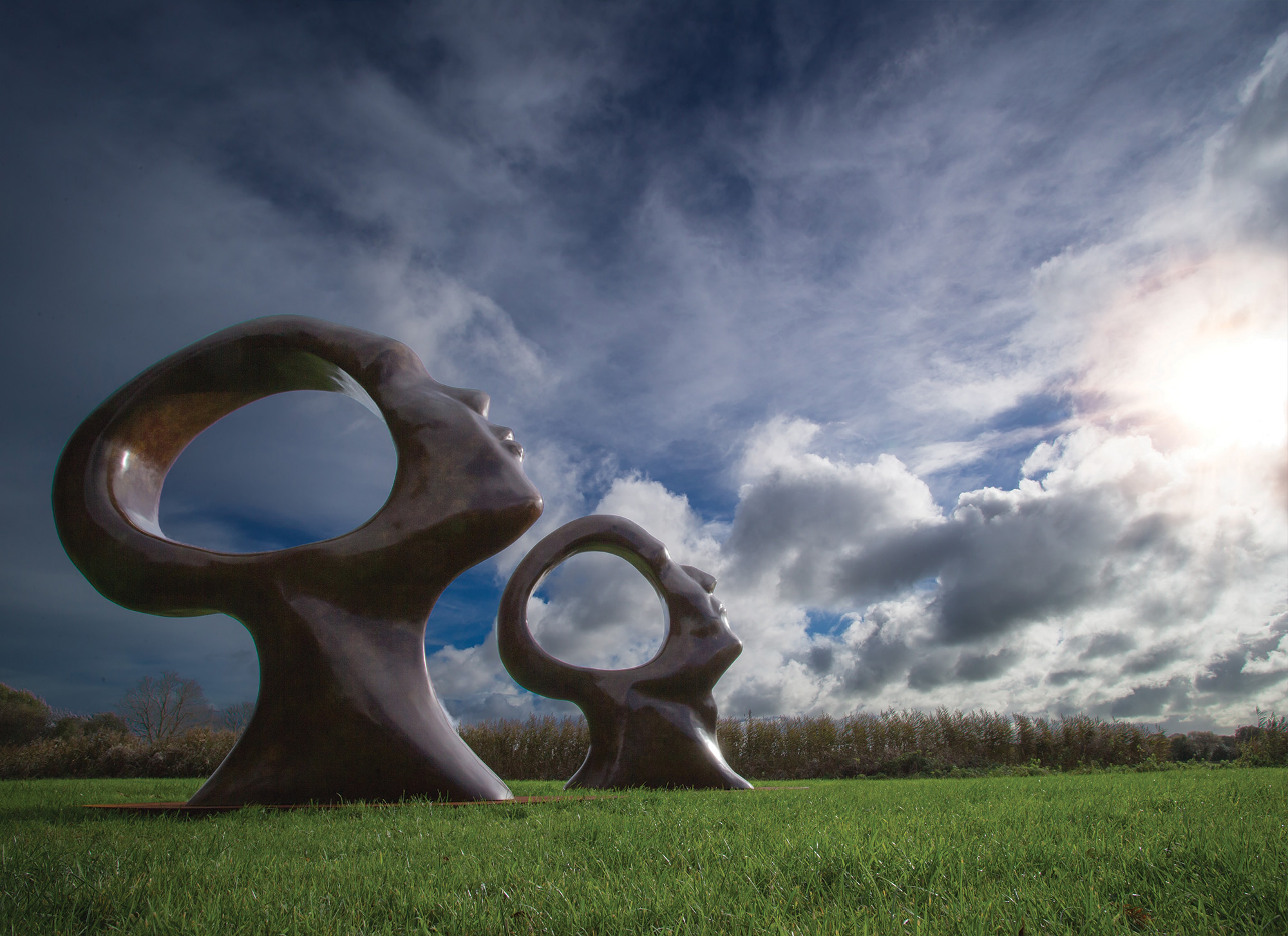
04 Aug Grounded in Nature
IN SIMON GUDGEON'S WILDLY STIMULATING SCULPTURES, there are often literal openings of space awaiting the viewer; keyholes that plunge through mass, inviting us to be transported from where we are to a deeper place of contemplation.
In Search for Enlightenment — Gudgeon’s acclaimed monumental work that was publicly exhibited in London, not far from Tate Britain — the surrealist outlines of two human heads circle from the ground. Through their hollow centers we see real atmospheric skyscape; the natural environment animating the work. In Gudgeon’s signature avian work Isis — inspired by the ibis and found in two castings today, one in London’s Hyde Park and the other at the National Museum of Wildlife Art in Jackson Hole, Wyoming — the soothing negative space created from the bird’s curvilinear neck serves as a visual portal. And while peering into Dancing Cranes, which seems lifted from a Mesopotamia hieroglyph, a pair of mated lovers exact a striking silhouette burnished by flaring wings.
If Gudgeon’s creations can’t be set in actual motion, he makes sure we know that everything around them is. The artist, who obviously knew the delights of rural daydreaming, explores interactive illusions of mass and line. He is always thinking about how his work will read outdoors in 360-degree environments. And he employs kinetics when possible, allowing sculptures to mesmerizingly shift in the wind. Gudgeon is constantly exploring new materials and concepts to achieve better aesthetic effect. And, always, he is defying labels.
“For me, all inspiration originates from nature — the shape of a leaf, the movement of grass, the form of a bird — these are the things that inspire and lead to the creation of abstract, kinetic and bird sculptures,” he says. “Form is continuously refined toward simplicity and beauty; where the origin of cultures and species are explored, new ideas are developed; and the real voyage of discovery consists not in seeking new lands but seeing with new eyes.”
Gudgeon is one of the rare Britons in recent years who has crossed the Atlantic and found enthusiastic audiences in the United States among wildlife, Western and neo-contemporary art collectors. Apart from his work appearing in prominent U.S. public and private collections, his pieces in the U.K. are part of the estates of the Duke of Edinburgh, the Duke of Bedford and the Duke of Northumberland.
“Collectors who favor naturalism find comfort in the smooth reductive organic forms, and others with an eye for modernism have much to stimulate their visual and intellectual energy. His artwork speaks to the sophisticated collector,” says Mark Tarrant, director of Altamira Fine Art in Jackson Hole, Wyoming. Gudgeon’s gift, he notes, is creating forms that float between abstraction and realism in a very natural way. There is no randomness, instead an authentic interpretation of his subject persists.
With Falcon, a raptor plots its next flight; with Hornbill, the eye of the bird transmits a spark; with Lyrebird, shapes sing a tune; with Swans, a pair of mythic birds surface from water. Swifts gleans as a bas-relief panel, and Kingfisher on a Branch, in which an innovative armature mimics blades of grass, seems to defy gravity.
Gudgeon isn’t radical in the sense he aspires to assail — or reject — the pillars of art history, forsaking what’s come before as conceptual artists are wont to do. His work, rather, is an extension of modernity speaking to his own time, an intersection of natural awe framed by cultivated human environments made of brick, mortar, steel and glass.
Plying the juxtaposition, his pieces give us a reason to stop, reflect and meditate, to unplug from technology, to forget about the rat race if only for a moment, to slow down and enjoy the pleasures of being still and mindful. “No true artist sees things as they really are; art is the projection of the imagination and should be free of trying to find a reason or meaning for a subject,” Gudgeon says. “This, together with a murmuration of thoughts and emotions, combines to produce the finished piece.”
Most of Gudgeon’s sculptures don’t start out with conscious deliberation; they percolate first at a subliminal level. “What happens is that an idea enters my mind — be it a shape, a movement or an emotion,” he explains. “Ideas come from a combination of observations, thoughts, beliefs and the profound experiences of life.”
It was during a sojourn to Africa where the genesis for his masterpiece Search for Enlightenment began. At its foundation, the piece is about human humility and reverence for cosmic life forces. Gudgeon was standing on a mountain top, watching the sun descend below the horizon. As the light diminished, 200 billion stars glittered in the Milky Way. “Our galaxy extends for 100,000 light years and is part of a universe that is 93 billion light years across. The universe is over 10 billion years old and consists of hundreds of billions of galaxies,” he says. “It is at that moment that I began to grasp the narrowness of consciousness, the vastness of time and the transience of humanity. Most of our lives are spent within the narrow confines of our own existence, we don’t look beyond what we know and consider what is beyond.”
Gudgeon, cultured, well-read, mild mannered and wickedly witty, does not come across as a farm boy, and when he says he was formerly a solicitor (lawyer), it is believable. Born in Yorkshire in 1958, he “lived deep in the countryside on the family farm, learning the essential arts of observation, evaluation and interpretation of how animals and birds behave, both with each other and man.”
Becoming restless as he moved through his 30s, missing the physical relationship of youth that bonded him with the natural world, he painted for a while. Then he picked up a wad of clay at age 40 and modeled his first figures. With an engineer’s attention to precision, he excelled and quickly gained a following, fueling a plunge into his second life as a fine artist.
American wildlife painter Andrew Denman says Gudgeon’s exquisitely stylized wildlife pieces, such as Hornbill, “only whisper at what the subject is about” and understate the revelation.
“What impresses me about Simon’s work is his contemporary visual language,” notes Denman, who is among a new generation of nature artists. With Isis, he draws a comparison to Constantin Brâncusi’s Bird in Space series, about forms gathering strength from surrounding negative space and holding variations in light.
“Simon isn’t derivative. What he does is his own, drawing upon his own experiences in our world,” explains Denman, who has accompanied the Gudgeons on research trips to eastern Africa. “A lot of his pieces do an amazing job of blending something that looks new yet read in their composition as something that is very old, very solid, almost like a treasure pulled out of an Egyptian tomb. He’s creating an iconography for archaeologists of the future to find and wonder at.”
At the National Museum of Wildlife Art, Isis holds a perch on the museum’s outdoor sculpture walk, rising above the National Elk Refuge and providing a visual entry to the northern wildlands. “The name Isis comes from the Egyptian goddess of nature — the feminine archetype for creation,” Gudgeon says of his best-known masterpiece. “Her titles include goddess of fertility; mother of deities; queen of heaven, earth and the underworld; goddess of simplicity; and the great protector. Her associations can be viewed in the finished sculpture. It is essentially a contemplative piece, inward-looking, trying to understand the reason for our existence: where we have come from, where we are going and our place in the universe.”
When Gudgeon was juried into the Leigh Yawkey Woodson Art Museum’s prestigious Birds in Art exhibition — taking place this year September 10 through November 27 — his work commanded attention from both fellow artists and collectors who descend upon the show in Wisconsin every autumn.
Over her long tenure, Kathy Foley, director of the Woodson, has watched the old guard of avian art assert its rightful place, and she has enjoyed seeing new generations of two- and three-dimensional visionaries rise to make dramatic 21st-century statements. Foley remembers how Gudgeon’s first entries at Birds in Art elicited “oohs and aahs” that left people talking. “I think this is so for a number of reasons: his forms are seductive; his patinas are scrumptious; and he always varies his subjects and approach,” Foley says. “There is a ‘pushing the envelope’ quality to Simon’s work that I find especially alluring and interesting. Scale is another aspect of his work that is appealing — he works large and small; his work is effective in all formats.”
Gudgeon’s work has, in a way, been field tested. Seldom mentioned in most stories about Gudgeon the artist — though essential to point out — is that his wife, Mo, serves as his inspiration, chief critic and is his formidable intellectual equal, if not his superior in charm.
Nearly a decade ago, the couple acquired property in the countryside outside of Dorset in southwest England where they began building a dream called Sculpture by the Lakes. It was intended to be an experiment in achieving harmony, and everywhere there are glorious sightlines. The garden takes shape as a synergy of Gudgeon’s desire to create sculpture that appears to organically extend from its setting and from Mo’s talent for botanical displays and gardening. The landscaped grounds, replete with bird-friendly marshes, have grown into a destination for amateur naturalists.
Bringing it to life was a commitment of time that fully engulfed their energies. Recently, the Gudgeons announced they were selling Sculpture by the Lakes in order to focus on Simon’s new projects and travel.
“We just have big ideas,” Mo says. “Someone said to me the other day, ‘I don’t know how you have the energy to keep going. You do everything so big.’ Simon and I think about the world the same, and one of the things we believe is pursuing beauty and doing the things you love. We feel lucky when we hit upon something that resonates with other people.”
Coming down the pike, Gudgeon says, are new figurative pieces called Celeste and Sylph, depicting ballet dancers fabricated from bronze leaves. “This is a departure from the traditional method of casting bronze sculptures and was a huge challenge in terms of learning new skills — always necessary as part of an artist’s development,” he says. “Solving problems is something I really enjoy.”
Tipping his hat to abstraction, Gudgeon also has experimented with a series of mixed-media naturalistic paintings. Highly textured, they are obvious extensions of his adventures in three dimensions. Research safaris to Africa and road trips across the American West have also planted the seed for Gudgeon to perhaps someday delve into megafauna, a milieu that is distant from where he resides in England, where large predators and prey were extirpated centuries ago. Already, he’s made a minor foray with his recent series of “skull pieces,” including Raven and Bison, that have proved popular with U.S. collectors. And there’s a solo exhibition on the horizon, slated to open in Basel, Switzerland.
“As an artist, I do not want to be compartmentalized; instead I want the freedom to look at new subjects and new techniques and create art that people can respond to,” Gudgeon says. “All my work does have the common theme of being about explorations in abstraction and form, expressions of beauty that appeal to the senses.”
Cory Fuller of Gladwell & Patterson, a London Gallery established in 1752, recruited Gudgeon into her stable after encountering Search for Enlightenment on display at the 2015 Chelsea Flower Show. “It stopped me in my tracks, drew me in and I lost myself in the beauty of his sculpture garden. That was the start of an exciting journey and a meeting of minds,” Fuller says.
“Simon’s works resonate with so many people. One has an extraordinary emotional response to his fluid forms capturing the very essence of nature and wildlife. His sculpture is engaging and dynamic,” she adds. “With a shift of light comes a change in character of the bronze; with changing seasons, new perspectives; and from different angles, new visions. His work grounds you in nature.”
- “Isis” (detail) | Bronze | 10 x 3.7 x 13.6 feet
- “Sylph” (detail) | Bronze | 8.5 x 3.6 x 3.2 feet
- “Lyrebird” (detail) | Bronze |15.8 x 2 x 1 feet
- “Falcon” (detail) | Bronze | 6 x 1.8 x 1 feet
- Installing “Search for Enlightenment”
- “Dancing Cranes” | Bronze | 7 x 5 x 1 feet
- “Raven” | Bronze on Steel Plinth | 3.2 x 2.1 x 1.5 feet





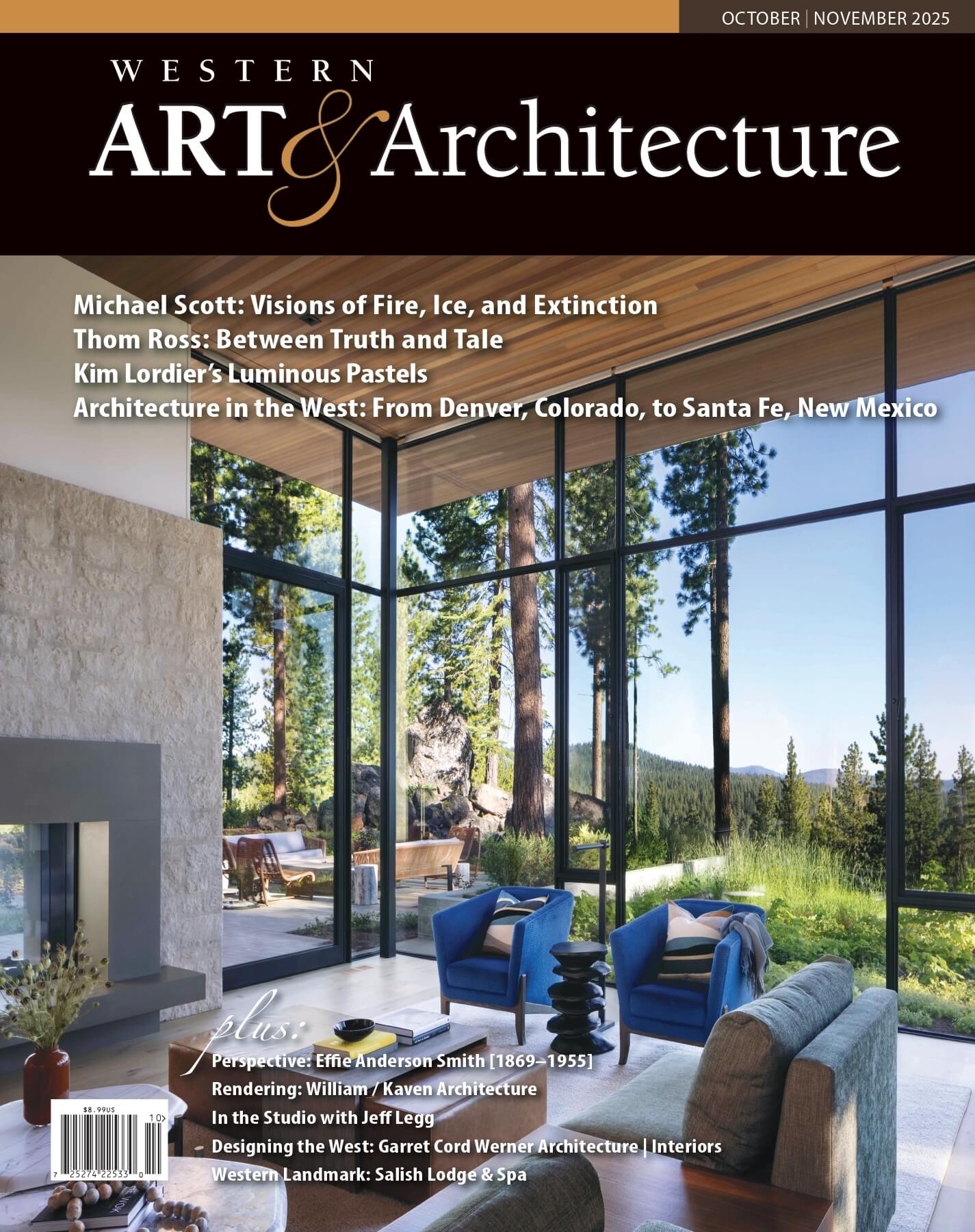
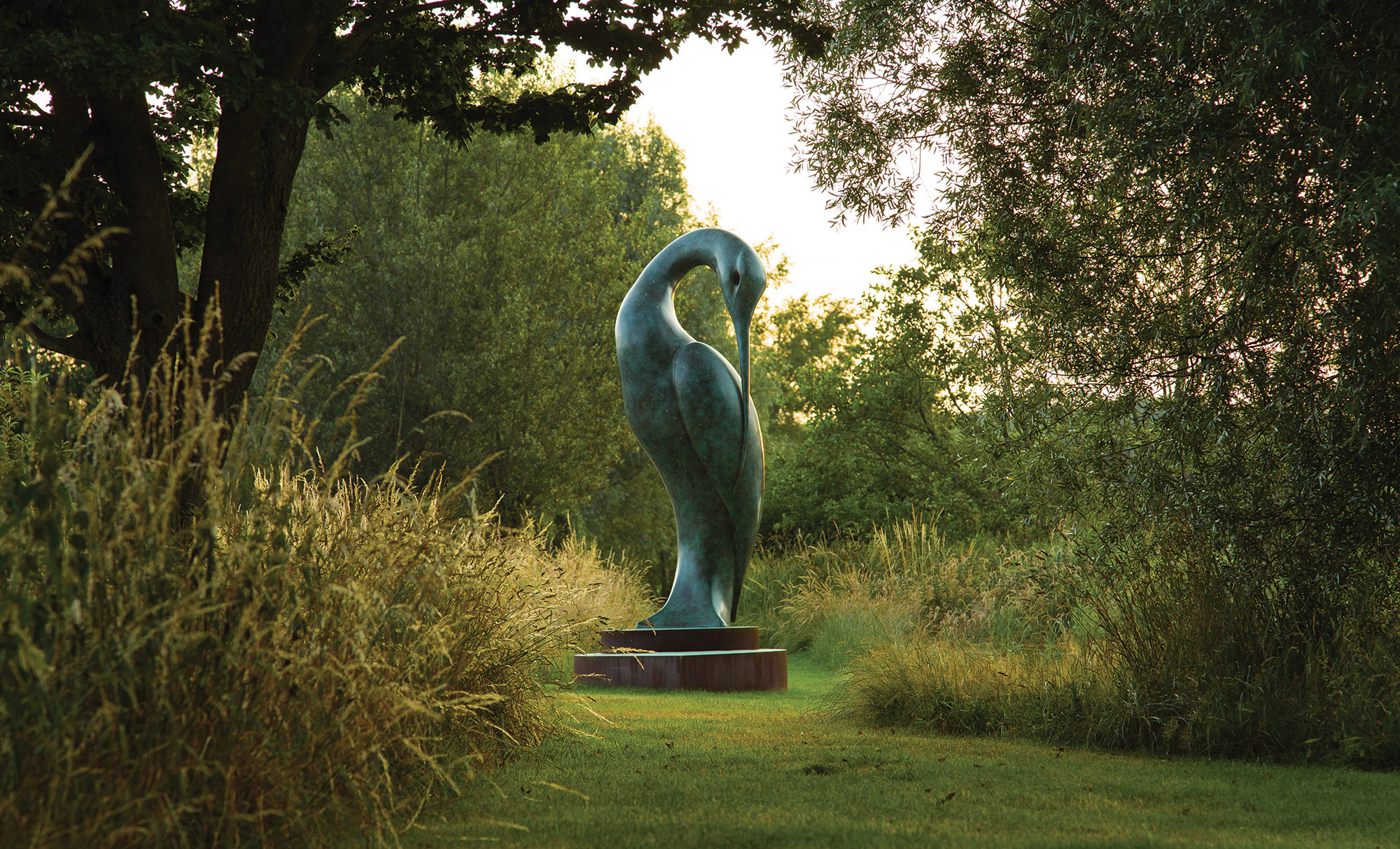
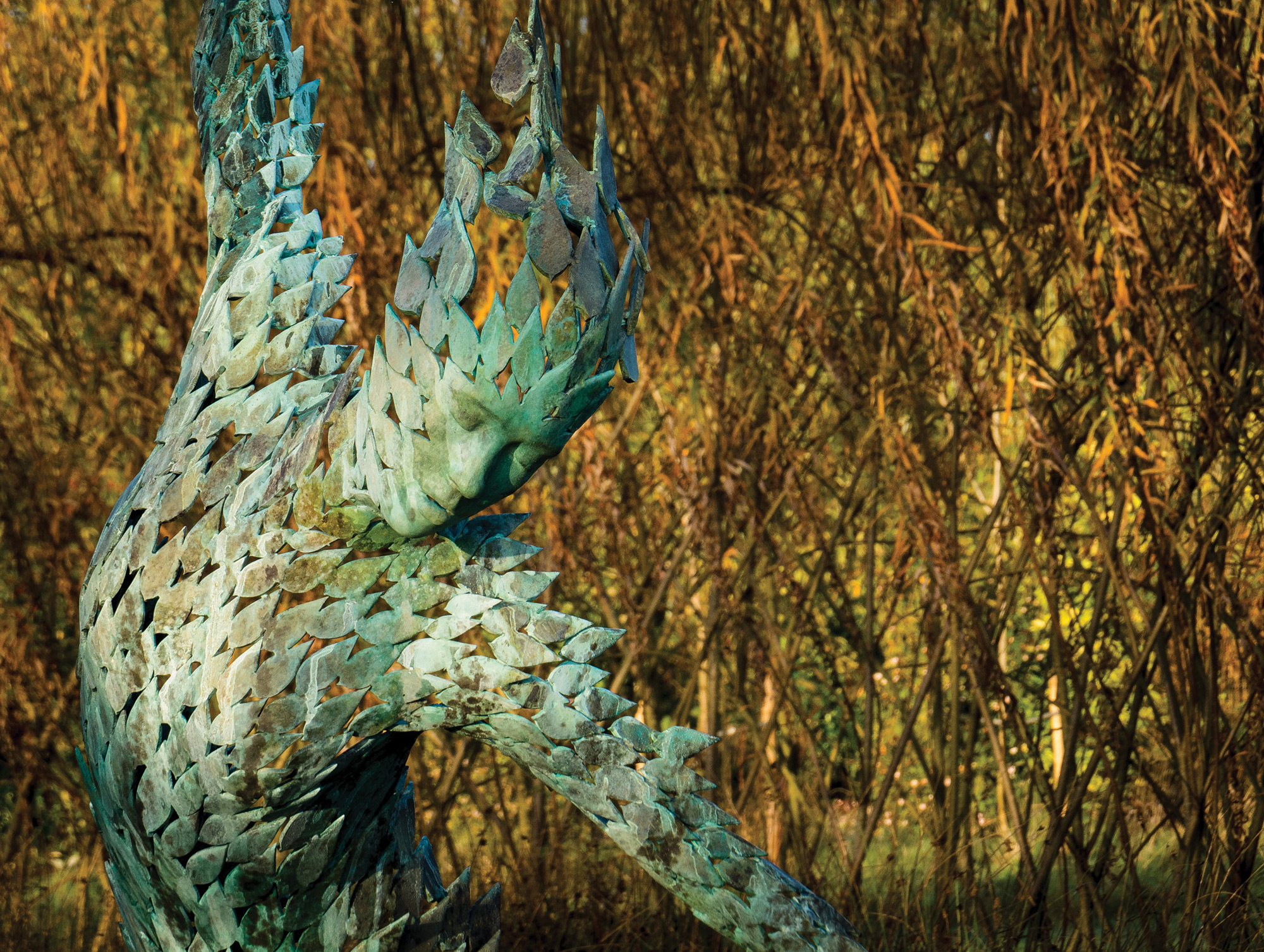
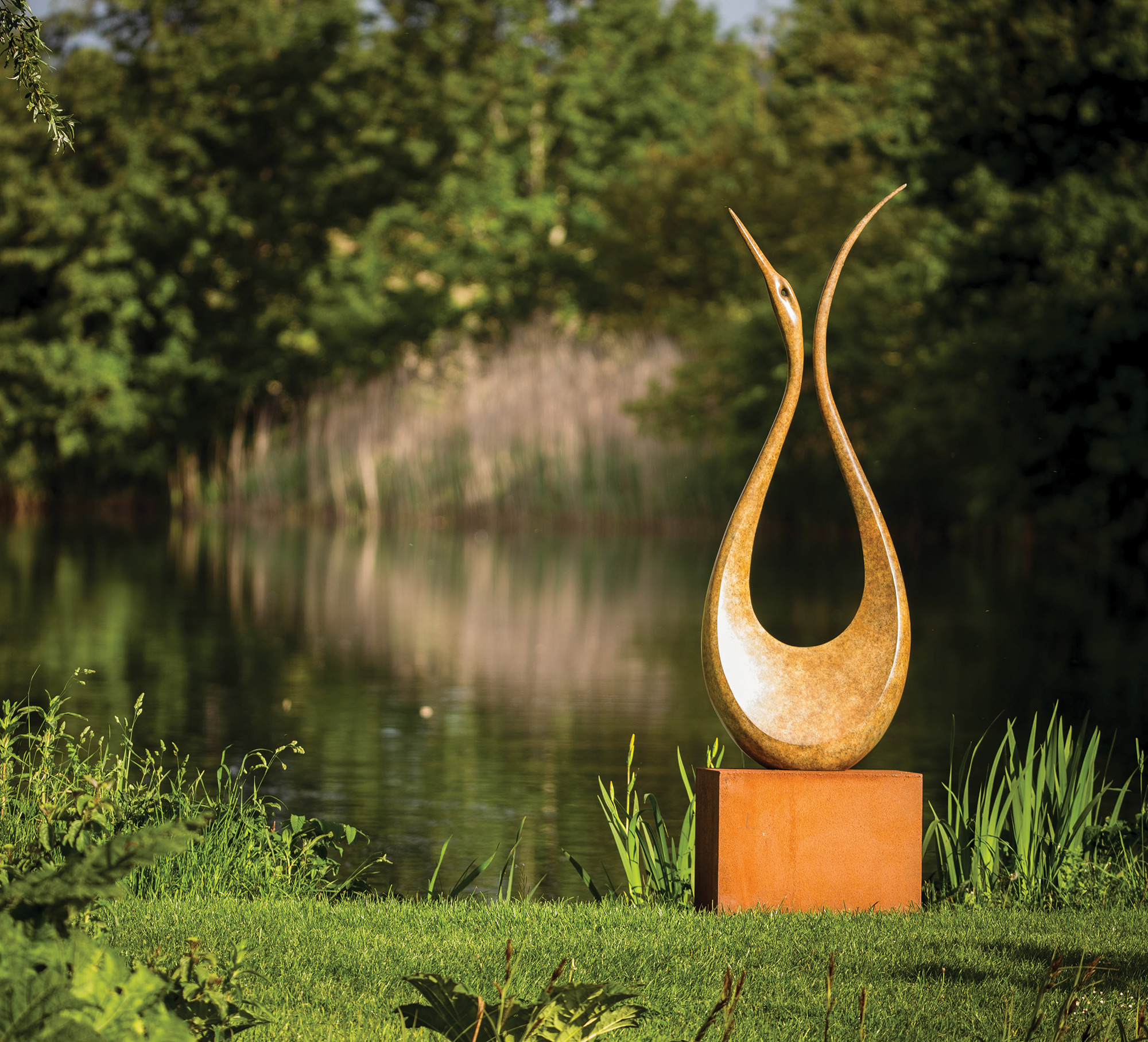

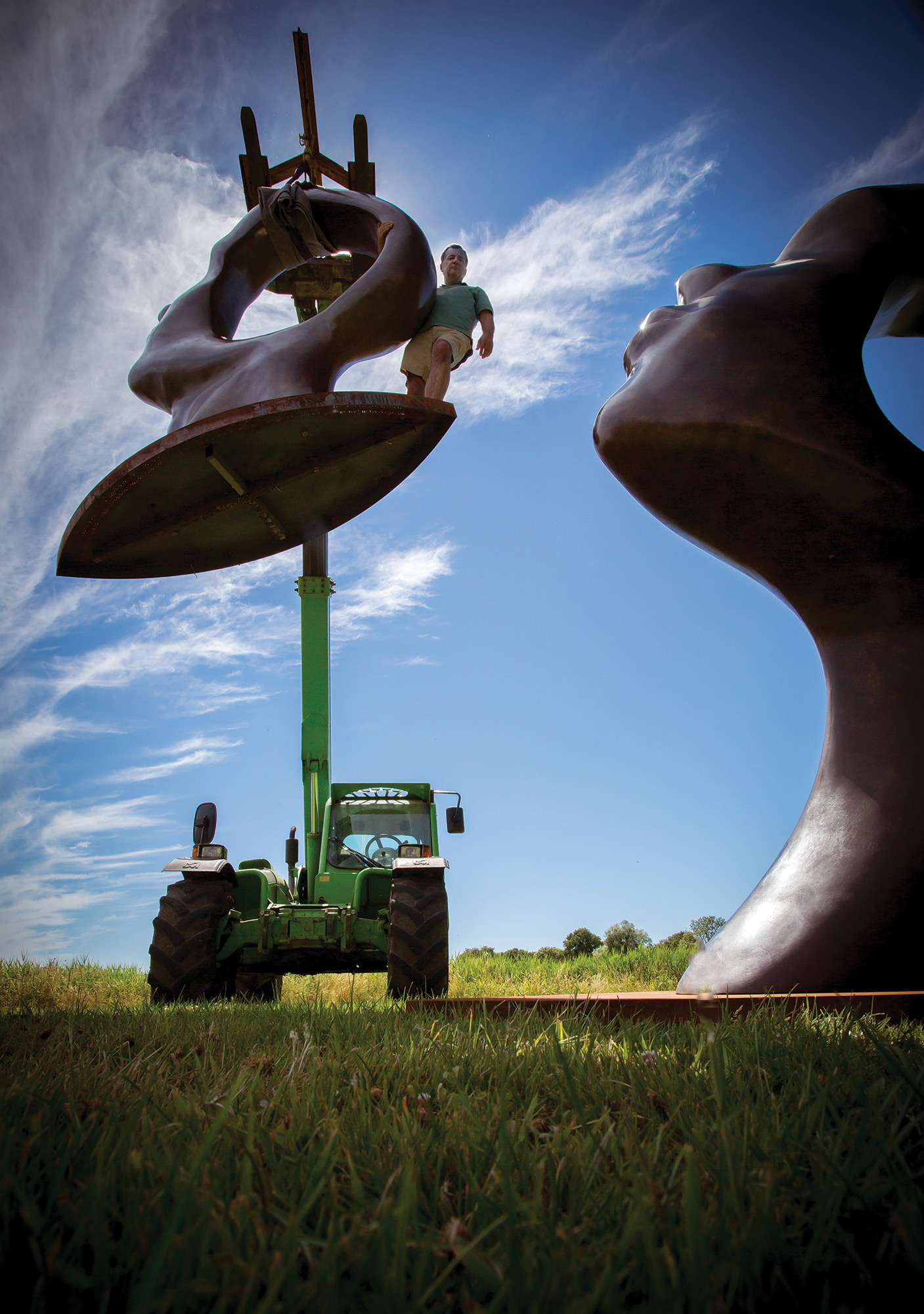
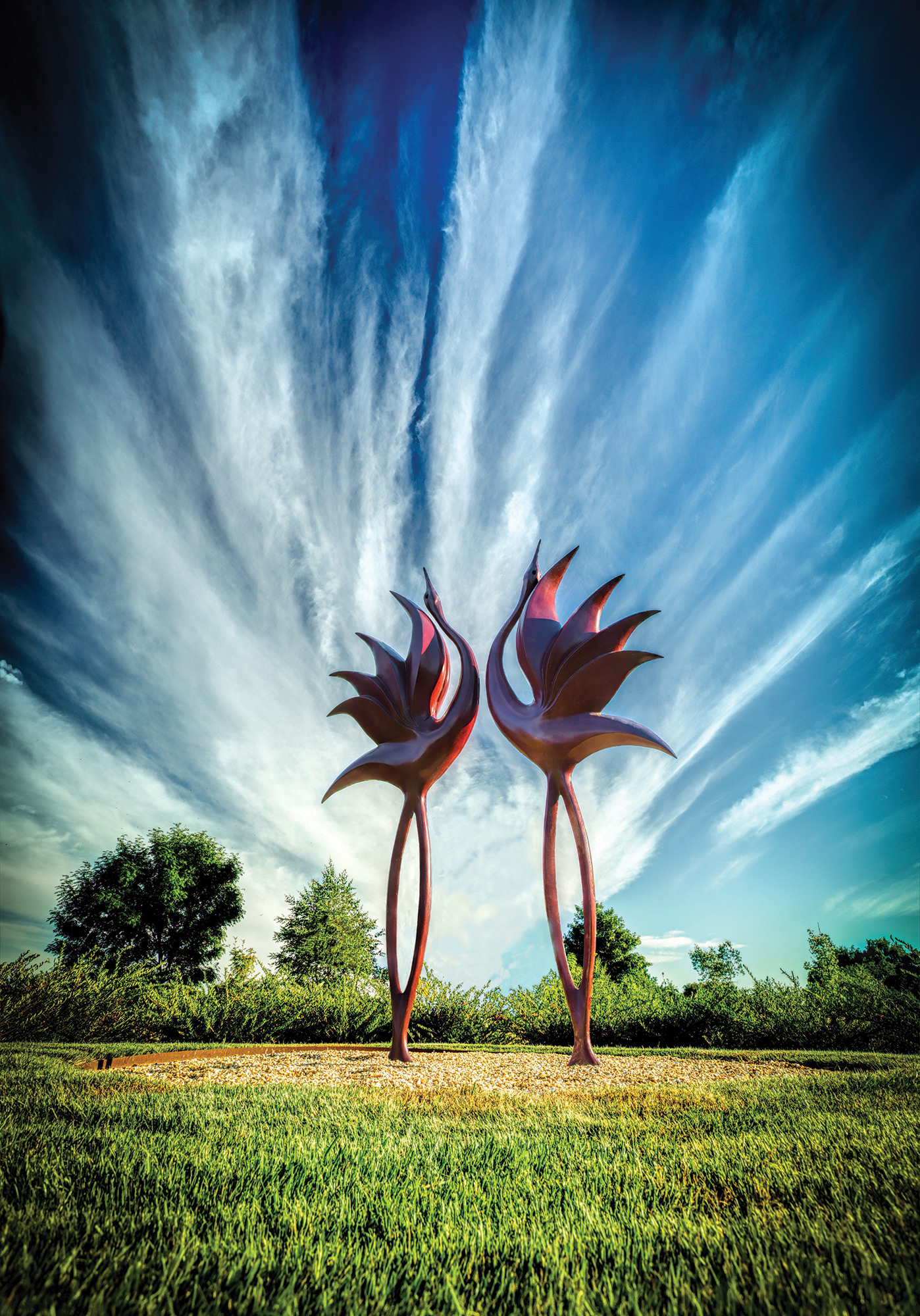
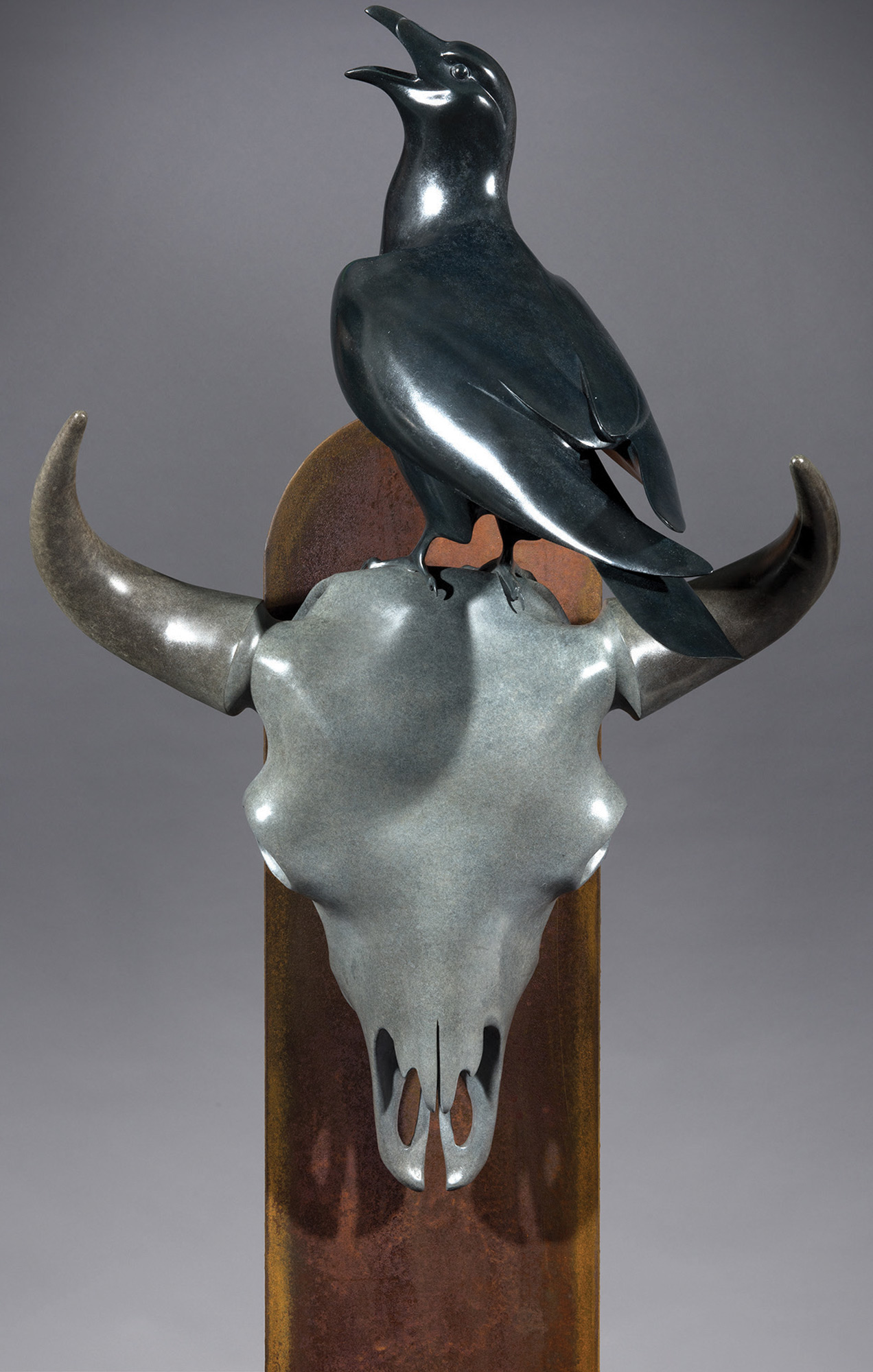
No Comments